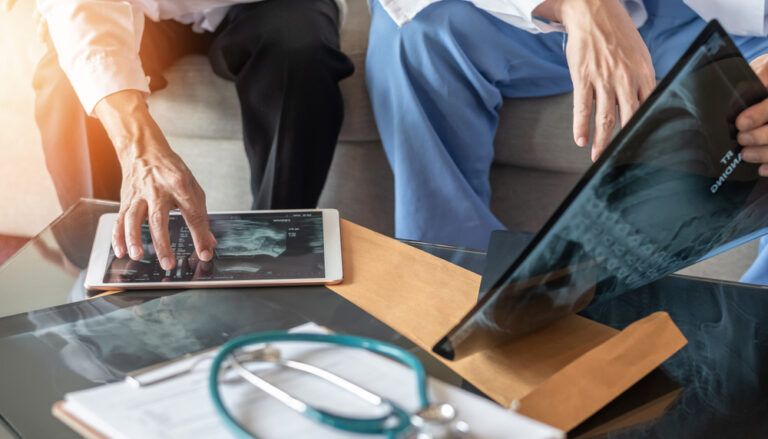The Future is Now: Minimally Invasive Orthopedic Surgery in Merritt Island, FL

Minimally invasive orthopedic surgery (MIOS) has emerged as a transformative approach to treating musculoskeletal issues, offering patients less pain, faster recovery, and reduced hospital stays. Traditional orthopedic procedures often require large incisions, resulting in extended healing times and increased risk of complications. By contrast, MIOS uses smaller incisions, specialized instruments, and advanced imaging techniques to achieve the same—if not better—surgical outcomes.
At Space Coast Orthopedic, Dr. Luc Teurlings utilizes the latest minimally invasive techniques to ensure patients in Merritt Island and the surrounding communities can return to their daily lives with minimal interruption. Whether addressing joint injuries, torn ligaments, or degenerative conditions, the goal is to restore function with the least trauma possible.
What Makes It “Minimally Invasive”?
The defining feature of MIOS lies in the surgical approach. Surgeons use tools like arthroscopes—small, camera-equipped devices inserted into the body through tiny incisions—to perform complex procedures while viewing the operation on a monitor. Compared to open surgery, which involves cutting through muscle and tissue, MIOS requires less disruption to surrounding structures, preserving the integrity of healthy tissue.
This technique not only decreases the patient’s exposure to infection but also allows for quicker post-operative mobility. For orthopedic conditions involving the knee, shoulder, hip, or spine, MIOS has become the gold standard where applicable. However, the technique requires specialized training and experience to perform successfully, which Dr. Teurlings brings to every case at Space Coast Orthopedic.
Advantages of Minimally Invasive Techniques
One of the primary benefits patients notice is a significantly faster recovery time. Smaller incisions mean less trauma to the body, which translates to less inflammation and discomfort following surgery. This enables many patients to begin physical therapy earlier and return to work or sports activities in a shorter timeframe than with traditional methods.
Pain management is another critical factor. Patients undergoing MIOS typically report lower pain scores and require fewer narcotics post-surgery. This not only enhances comfort but also reduces the risk of opioid dependency—a growing concern in postoperative care.
Reduced Hospital Stays and Lower Costs
MIOS procedures are often performed on an outpatient basis, meaning patients can go home the same day. When an overnight stay is necessary, it is usually much shorter than with traditional surgeries. This not only benefits patients personally but also helps reduce overall healthcare costs by lowering hospital-related expenses and minimizing time away from work or home responsibilities.
In addition, smaller incisions lead to smaller scars, which is a welcome cosmetic benefit for many patients. These incisions also heal faster, further reducing the risk of wound-related complications such as infections or hernias.
Common Conditions Treated with MIOS
Minimally invasive techniques are applied in a wide variety of orthopedic treatments, particularly in the following conditions:
- Rotator cuff repairs
- ACL and meniscus tears
- Hip arthroscopy for impingement or labral tears
- Spinal decompression or discectomy
- Joint reconstructions and replacements
For each of these, Dr. Teurlings considers a range of patient-specific factors to determine whether a minimally invasive approach is appropriate. Not all cases qualify, but when they do, the advantages often far outweigh traditional options.
What to Expect Before and After Surgery
Before undergoing a minimally invasive procedure, patients undergo a thorough evaluation that includes imaging studies, physical assessments, and a detailed consultation. Dr. Teurlings takes time to explain the surgical plan and answer any questions, so patients feel fully informed and confident.
Post-surgery, most patients experience a brief recovery period at the surgical center before heading home. Instructions will include pain management strategies, wound care, and physical therapy schedules. Since many MIOS patients begin movement shortly after surgery, early adherence to therapy can significantly enhance outcomes.
The Role of Technology in Better Outcomes
Advancements in surgical imaging and instrumentation have made MIOS more precise and effective. Tools such as 3D navigation systems, robotic assistance, and high-definition arthroscopic cameras allow Dr. Teurlings to navigate delicate anatomy with remarkable accuracy. These tools improve visualization and enable more refined movements during surgery, which are essential when operating through small incisions.
The increased precision leads to better alignment in joint replacement, fewer complications, and longer-lasting results. Patients also benefit from shorter operative times and a lower risk of needing revision surgeries.
Why Patients in Merritt Island Trust Dr. Luc Teurlings
Dr. Luc Teurlings has built a reputation in Merritt Island, FL, for delivering high-quality orthopedic care with a focus on innovation and patient-centered outcomes. His expertise in minimally invasive orthopedic surgery means patients at Space Coast Orthopedic receive care that is at the forefront of modern medicine, without needing to travel far from home.
His team provides ongoing support through every stage of the surgical journey, from consultation to rehabilitation. This personalized approach ensures not just technical success, but long-term patient satisfaction and quality of life.
A Modern Path to Healing
Minimally invasive orthopedic surgery represents more than just a trend—it’s a shift toward more humane, efficient, and results-driven care. For patients struggling with joint pain, sports injuries, or degenerative orthopedic conditions, MIOS provides a solution that minimizes disruption and maximizes recovery.
At Space Coast Orthopedic, Dr. Teurlings and his team are committed to helping you get back to doing what you love, faster and with fewer setbacks. If you’re considering surgery, ask about your minimally invasive options—it could be the best decision you make for your mobility and long-term health.
Sources
Arden, N. K., & Nevitt, M. C. (2006). Osteoarthritis: Epidemiology. Best Practice & Research Clinical Rheumatology.
Noyes, F. R., & Barber-Westin, S. D. (2007). ACL Surgery: How to Get It Right the First Time and What to Do If It Fails. The Journal of Bone & Joint Surgery.
Mason, J. B. (2008). Arthroscopic Techniques in Shoulder Surgery. Orthopedic Clinics of North America.


Recent Comments